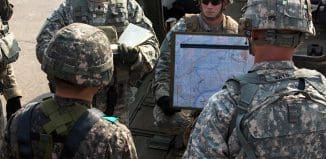Boko Haram: A New Type of Terror?
This post is also available in:  עברית (Hebrew)
עברית (Hebrew)
 A recently published analysis by IHS Jane’s Terrorism and Insurgency Center, offers insights on how to predict future attacks by Islamist militant group Boko Haram. The group, whose name translates to “Western education is sin” in its Hausa language, has been launching attacks primarily in northern Nigeria since 2004. The group’s 15 April 2014 abduction of 276 schoolgirls from a school in Chibok, Borno State is unlike earlier attacks targeting Nigeria’s civilian population in public markets and transportation hubs.
A recently published analysis by IHS Jane’s Terrorism and Insurgency Center, offers insights on how to predict future attacks by Islamist militant group Boko Haram. The group, whose name translates to “Western education is sin” in its Hausa language, has been launching attacks primarily in northern Nigeria since 2004. The group’s 15 April 2014 abduction of 276 schoolgirls from a school in Chibok, Borno State is unlike earlier attacks targeting Nigeria’s civilian population in public markets and transportation hubs.
IHS notes that following a May 2013 state of emergency declaration in the north-eastern states of Borno, Yobe, and Adamawa, Boko Haram’s core operational region, there has been a shift in the group’s operation patterns.
First, Boko Haram has increased the attacks directed at ordinary civilians, and its attacks are becoming more lethal. Between January 2010 and March 2013, roughly 2.9 people were killed per attack, while between April 2013 and May 2014, Boko Haram attacks led to 17.7 fatalities per attack. So far in 2014, roughly 27.9 civilians have been killed per attack.
Second, Boko Haram’s area of operations has contracted during the past eighteen months, with majority of attacks between 2013 and early 2014 carried out in Borno State, where the group originated. The group has managed to stage some attacks in central Nigeria, including an April attack in the capital, Abuja, and a May attack in Jos. Attacks outside of Boko Haram’s area of operations tend to be bombings, suggesting that the group’s ability to mount assaults, ambushes, and other guerrilla operations is limited to its northeast strong hold.
iHLS – Israel Homeland Security
IHS reports that attacks on secular schools did not occur until 2012, eight years after the group’s first attack, and are largely a response to the population’s cooperation with the government’s counterterror efforts, and specifically to the participation of local youths in government-backed anti-Boko Haram vigilante groups. Attacks on students resulted in mass killings at dormitories and male students were generally the targets. A 29 September 2013 attack in the College of Agriculture in Gujba, Yobe resulted in at least ninety deaths when militants attacked four male dormitories while sparing the single female dormitory on campus. The Chibok abduction, directed at female students, led analysts to believe that additional factors might have motivated the operation.
The May 2013 state of emergency in Borno State pushed Boko Haram into remote bush camps, including those in the Sambisa Forest. The abduction of girls in Chibok could have been motivated by the need to find orderlies and wives to make it easier for the fighters to sustain life in the forest. Similar motives have led to mass abductions of girls by other militant groups like the Lord’s Resistance Army (LRA) in Uganda. Should this be the motivation, analysts believe that Boko Haram foresees its immediate future as a rural guerrilla movement, and that Boko Haram camps are sufficient and secure enough to accommodate both fighters and non- fighters such as the abducted girls.





























